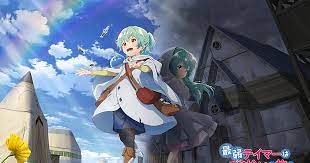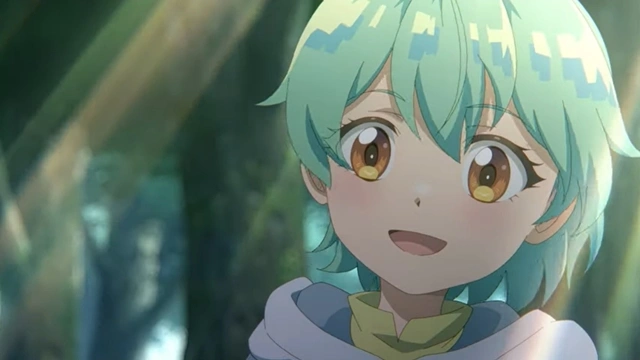A unexpectedly good fantasy animation from Studio Massket, The Weakest Tamer Began a Journey to Pick Up Trash is unfairly overshadowed during the Winter 2024 season by heavyweight titles Frieren and Delicious in Dungeon. It’s also their first full TV anime episode. This animated version is a labor of love for all involved, adapted from author Honobonoru500’s 2018 web book that developed into a light novel. From the flawless opening scene to the incredibly depressing closing song, it’s presented in such a way that it feels like a masterfully illustrated collection of fairytales brought to life.
Its heart is a dark, pulsating tale of trauma, just like all fairytales. Like the Blessings in Banished from the Hero’s Party, every human being in this planet is born with an intrinsic skill that comes from God. Each person’s skill is rated by the church after five years of age; the more stars an ability receives, the more potent and practical it is. Little Femicia possesses the “tamer” skill, and she leads a perfect existence with her parents and siblings until her fifth birthday. Subsequently, the priest declares that she has “zero stars” and is thus a wretched existence, despised by God. She starts to receive emotional and physical abuse from her family and other locals from this point on. When she flees, Luba—a kind, blind fortune teller—provides her with protection. Femicia is forced from her house by the villagers after Luba’s tragic death, with the intention of using her as a scapegoat.

The aforementioned backstory is connected to the terrifying third episode of an anime that was formerly primarily lighthearted and fluffy but had some serious undertones. Here we are in the realm of the Brothers Grimm, with Femicia/Ivy, the main character, being a small but terrified child who must grow up fast and run for her life. Fortunately, the entire show doesn’t revolve around horrifying child abuse, even though Ivy’s responses to the worried adults she encounters are influenced by her severe trauma. She fears that grownups will find out what she is hiding, reject her, or possibly murder her. Considering her past experiences, these worries are very understandable. She hesitates a long time before considering letting anyone in.
Ivy’s wanderings are not unlike those of characters from previous television series, such as Kino’s Journey. She visits several locations, mingling with the locals and establishing friends, yet she consistently choose to move forward to new experiences. She’s a savvy kid who catches, skins, and dresses small wild creatures like mice and rabbits for sale, earning enough money to maintain herself. People have often commented on how mature she appears to be for her age, even though kids who go through tough things like Ivy have to grow up and act more adult.
Weakest Tamer is supposedly an isekai because Ivy hears a voice in her mind that is that of her past incarnation, a little girl who passed away in a world not too dissimilar from our own. The only way the viewer can identify this voice is by hearing a ringing bell. I think this voice providing Ivy guidance is what makes her appear more responsible. Weakest Tamer’s sensitivity and emotional resonance help it to climb above the torrents of generic power fantasy junk in a medium brimming with repetitious, derivative isekai filth.
It’s likely because Ivy’s tamer talents are so weak and underdeveloped that she can befriend her beloved slime Sora without endangering his delicate body, rather than because she gets stronger or “levels up” in the traditional sense. Ivy’s rise in the world is solely attributed to her brilliance and dependence on Sora’s growing skills. Ivy’s love of looting the trash heaps mentioned in the title is a result of Sora’s growth from the consumption of expired healing potions. She even employs a concealed Sora at one point to distinguish between good and bad individuals. I suppose that’s a little bit dystopian, given that the people she labels as criminals ultimately suffer the penalty of being slaves.
Without a question, the first half of the show is the best; the second half consists of a drawn-out story that takes place in a single village and is fueled by far too many coincidences and plot devices. Ivy cognitively outmaneuvers several seasoned explorers, while the majority of the other characters seem to hang on to her every word. The main plot, which involves dismantling a big criminal organization, isn’t all that compelling.
Perhaps as a result of my trauma from the events of the third episode, I found myself waiting for something terrible to happen to poor, naive Ivy for the most of the show. Perhaps it’s just me, but thinking of a youngster of that age going so far by themselves causes intense anxiety among parents. My fears are somewhat relieved as Ivy makes friends with a large wild cat monster. Despite a plot involving kidnappers, I’m very delighted to say that, after the initial episodes, instances of child abuse are largely nonexistent.
Weakest Tamer is undoubtedly one of the finest travelogue anime in a long time for fantasy aficionados, and it’s unfortunate that most people didn’t catch wind of such a beautiful program. Beautiful animation, deeply moving music, an engaging lead character, and a superb English dub from day one are all featured in it. In the future, I’ll be watching Studio Massket with great interest and would gladly watch a second season.



